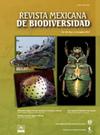墨西哥西北部两种飞虱(蜘蛛目:飞虱科)的遗传多样性和种群历史
IF 0.8
4区 环境科学与生态学
Q4 BIODIVERSITY CONSERVATION
引用次数: 0
摘要
墨西哥西北部的下加利福尼亚州是一个生态独特的地区,是该国唯一拥有地中海生态系统的地区,物种多样性高,许多群体都有地方性。对该地区生物多样性的研究很少,特别是对陆地节肢动物等生态重要类群的研究。对多样性的另一个重要方面,即遗传多样性的研究就更少了。由于资料的缺乏,本文基于核和线粒体DNA数据,介绍了该地区最丰富的2种Phidippus (Araneae: Salticidae)的遗传多样性和种群历史。其中分布较广的菲迪普斯·约翰尼(Phidippus johnsoni)在下加利福尼亚州属于1个大的泛疫种群,而凤凰(P. phoenix)则分为2个种群。这两个物种都具有很高的遗传多样性和估计的大种群规模,在过去的15万年中,P. johnsoni增加了,在最后一次冰期极大期后的最近3万年中,P. phoenix增加了。因此,这项研究强调了该地区的重要性,不仅因为它的物种多样性,而且因为在种群中发现的遗传多样性,这反映了更新世期间的生态稳定性,允许遗传多样性随着时间的推移而积累。本文章由计算机程序翻译,如有差异,请以英文原文为准。
Genetic diversity and population histories of two species of Phidippus (Araneae: Salticidae) from northwestern Mexico
The northwestern Mexican Baja California state is an ecologically unique area being the only part of the country with a Mediterranean ecosystem and a high species diversity and endemism for many groups. Studies on the biodiversity of the region are scarce, especially regarding ecologically important groups such as terrestrial arthropods. Even scarcer are studies on another important aspect of diversity, namely genetic diversity. Due to the paucity of information, the genetic diversity and population histories of the 2 most abundant species of Phidippus (Araneae: Salticidae) of the region are presented, based on nuclear and mitochondrial DNA data. Phidippus johnsoni, the more widespread of the 2, belonged to 1 large, panmictic population in Baja California, while P. phoenix was divided into 2 populations. Both species have high genetic diversity and estimated large population sizes, which increased during the last 150,000 years for P. johnsoni, and the last 30,000 years, after the Last Glacial Maximum for P. phoenix. This study, therefore, reinforces the importance of this area, not only for its species diversity but also for the genetic diversity found within the populations, which reflects ecological stability during the Pleistocene, allowing for the accumulation of genetic diversity through time.
求助全文
通过发布文献求助,成功后即可免费获取论文全文。
去求助
来源期刊

Revista Mexicana de Biodiversidad
环境科学-生物多样性保护
CiteScore
1.50
自引率
11.10%
发文量
69
审稿时长
12-24 weeks
期刊介绍:
Revista Mexicana de Biodiversidad appears in 4 issues per year and publishes the products of original scientific research regarding biodiversity of the Americas (systematics, biogeography, ecology and evolution), as well as its conservation and management.
The journal ensures high standards with a system of external peer review, and is included in the list of excellence of journals of the National Council of Science and Technology (CONACyT, Mexico). It is currently included in ASFA, Biological Abstracts, Biological Sciences, Latindex Periódica, RedALyC, Web of Science (Thomson Reuters), SciELO, SCOPUS, and Zoological Records.
 求助内容:
求助内容: 应助结果提醒方式:
应助结果提醒方式:


